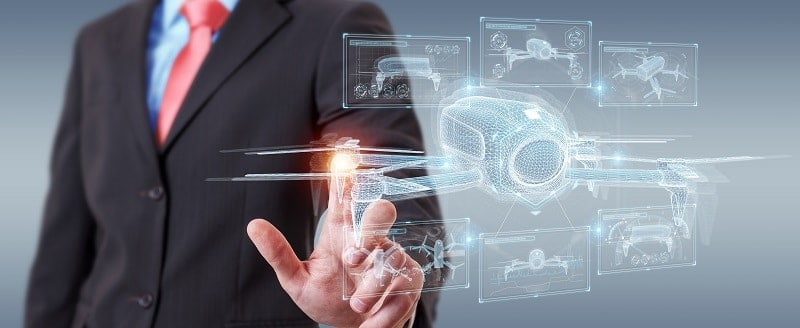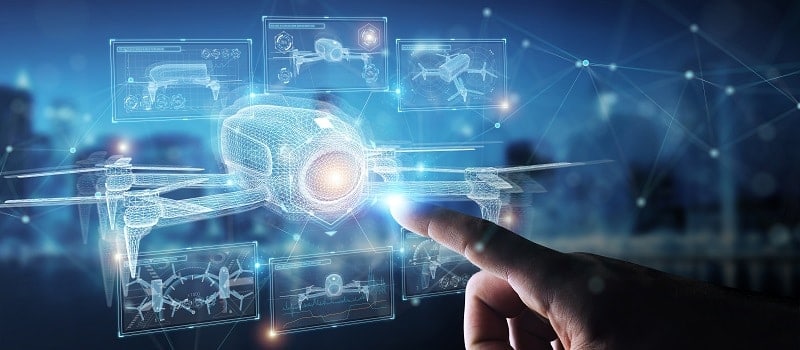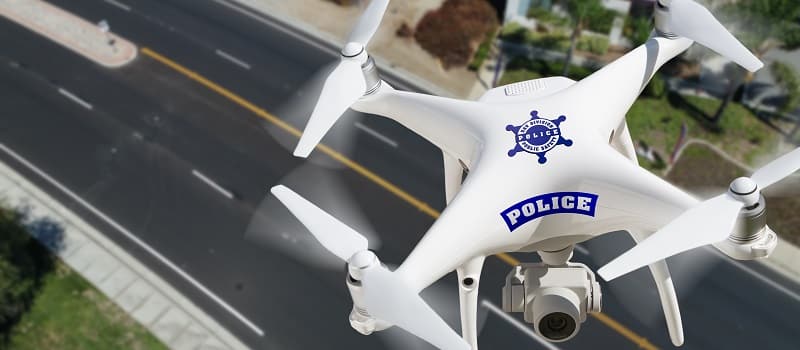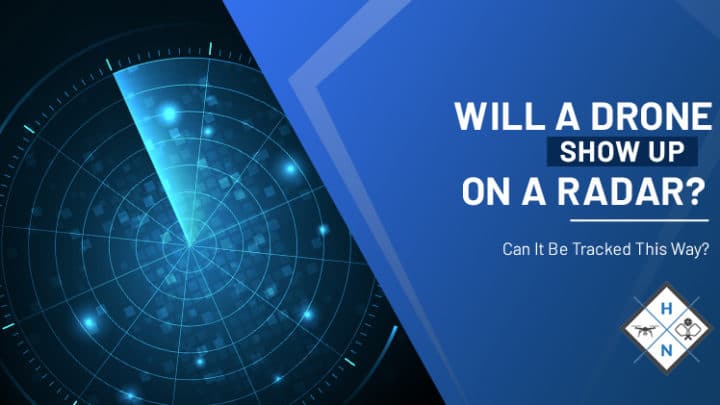The question on everyone's mind: Will a drone show up in radar detection systems and be detected by law enforcement or military personnel before they can cause harm where we live, work, play, etc.? Keep reading for the answer to this and much more…
In short, the answer to 'will a drone show up on a radar' is that it depends on the type and size of drone, as well how close you are trying to get near something that can detect drones before yours detects them too late!
The answer is more complicated than a simple yes or no. The question should be rephrased: "What will show up?" This way we know what kind(s) technology might have been used in order for us to find out if they were detected by someone else's radar system first, so our detection systems don't pick anything off after it's already passed through their airspace undetected.
In the following article we will explore several areas about this subject, including how drone detection works, the best equipment for detection, whether drone detection is legal, and other related questions.
How Drone Detection Works and the Technology Behind It
There exist many different types of detection systems which work differently depending on what angle your looking at things – some use lasers while others might rely more heavily sound waves but there really isn't any single system used universally across all industries because each has their own set needs when detecting small objects like aircrafts flying overhead such those with military bases where stealthy aircrafts are a concern.

The technology required for drone detection is not all that different from what you might find in your home or office – it's just more advanced and specialized because of the type, size (height) as well how close they're trying to get near something which can detect drones before yours detects them too late!
In short, drone detection utilizes the same technology that is used to detect other objects in the sky, but it's just more advanced and specialized because of what they're trying to get nearby.
The Best Drone Detection Equipment
Private drone detection is possible, but you should consider the type of equipment you need for your specific needs.
The drone detection systems that are available to the public can be used in a variety of ways, and they're not just limited by military bases or airports – you could use them at any location where drones might pose an issue!
The best equipment is going to depend on what type (size) as well how close they're trying to get near something which can detect drones before yours detects them too late!

The IRIS® drone radar is the best equipment for detecting small, low-flying and stealthy UAVs. It's also able to track multiple targets at once with its 360° coverage – perfect if you need a system that will be used in an area where there are lots of people or other objects around (like airports). The detection range on this device starts from 50 meters away up until it reaches 100 kilometers; so even though they might not have been detected yet by your own systems because their height was below what could normally be seen using traditional methods like infrared cameras mounted onto towers.
Another drone detection system is the DroneShield. This device is able to detect drones from up to 100 meters away and it can also be used in areas where there are lots of people or other objects around (like airports). The Drone Shield has a detection range that starts at 50 meters, but this increases with the use of an external antenna which will increase its coverage by another 20-30%.
The drone radar system developed for military applications called AN/TPQ – 34 Ground Master Radar System was designed specifically so as not only being capable enough detecting small UAVs like quadcopters before they get too close.
Finally, another drone detection system that is effective is the ELVIRA system. This system is able to detect drones from up to 50 meters away and it can also be used in areas where there are lots of people or other objects around (like airports). The ELVIRA drone detection systems have a range that starts at 25 meters, but this increases with the use of an external antenna which will increase its coverage by another 20-30%.
What is a Drone Micro-Doppler?
A drone micro-Doppler is a system that detects drones by analyzing the air currents they produce. It's able to detect small, low flying and stealthy UAVs because it can measure their speed in relation with wind direction – which means even if you're not looking for them specifically but are just trying out your radar on other objects like birds or planes then this will still work! The detection range starts from 50 meters away up until 100 kilometers; so, these systems have been used at airports where there might be lots of people around who could get hurt when something falls off an aircraft (like luggage).
Is drone detection legal? What are the rules around it?
The legal requirements for drone detection are different in every country but the general gist is that you need to have permission from whoever owns or operates whatever it might be you're trying to detect drones on.
The law is still evolving around these new technologies but there have been some major developments lately. For instance: a recent court ruling found against police use to track suspects with their own surveillance aircrafts without first obtaining warrants; this has led many experts believe we'll see similar rulings on other types such things like using radar systems mounted atop buildings looking out over city streets below at ground level where people walk by unaware any time day night while others may be looking for drones.
A recent court ruling found against police use to track suspects with their own surveillance aircrafts without first obtaining warrants; this has led many experts believe we'll see similar rulings on other types such things like using radar systems mounted atop buildings looking out over city streets below at ground level where people walk by unaware any time day night while others may be trying find them too late!
The United States has a lot of legislation and regulations about what can fly over certain areas, how high they're allowed go (which varies by airspace), when during daytime hours flights may take place as well if any type aircrafts should stay away at all times such like military bases where stealthy planes with low radar signatures could pose an issue! In addition, there's also laws against trespassing which means not only do people who own property get to decide whether someone else wants to come onto their land without being invited – even those flying overhead must abide too because the airspace belongs to the property owner!
Related Questions About Drone Detection
Can Small Drones Be Detected by Radar?
Radars are designed to detect large objects and can be tricked by small drones. The size of the drone is not a factor in detection, but rather its radar cross-section (RCS). A larger RCS will make it easier for radar equipment operators or pilots with their eyes on an aircraft's cockpit display screen -to spot what they're looking at than if there were no object detected! In addition, some newer military grade systems have been developed that use algorithms which allow them to identify smaller targets like UAVs as well! These new technologies include: "detection range" mitigation systems to help reduce false alarms from other sources such as lightning strikes; proprietary interdiction technology used only within government facilities.
Can the Public Detect Drones Nearby?
Yes, the public can detect drones nearby. The FAA has been working on a system called "UAS Traffic Management" that will allow pilots to see what other aircraft are in their area and how high they're flying so there's no chance of collision or interference with another craft – including small objects like birds!
This is just one way for people who aren't professionals at detecting things from up above (or even down below) but want more information about something before it gets too close.
Can Drones Be Used for Surveillance?
A lot of people are also concerned about privacy and whether or not drones could be used for surveillance. The answer is yes, but there's a few things that need to happen first before they can do so legally in most cases: First off you have federal laws such as HIPAA which protect patient health information. Secondly, there are state laws that protect the privacy of individuals such as those in California. And finally, you have local ordinances which can be even more restrictive than federal or statewide ones! For example: In Los Angeles County it's illegal to use a drone for surveillance without first getting permission from an individual who owns property where they want to fly over.

More information can be found here: Drone Detection Systems
http://www.dronedetectionsystem.com/drone_detections
Conclusion
Yes, drones are everywhere, but it doesn't mean we have to fear them as there are systems, technology, equipment laws and regulations in place to protect us and allow us to detect them in the air.
Shawn Manaher loves to play with new toys and dive into new hobbies. As a serial entrepreneur, work definitely comes first but there is always room for hobbies.

